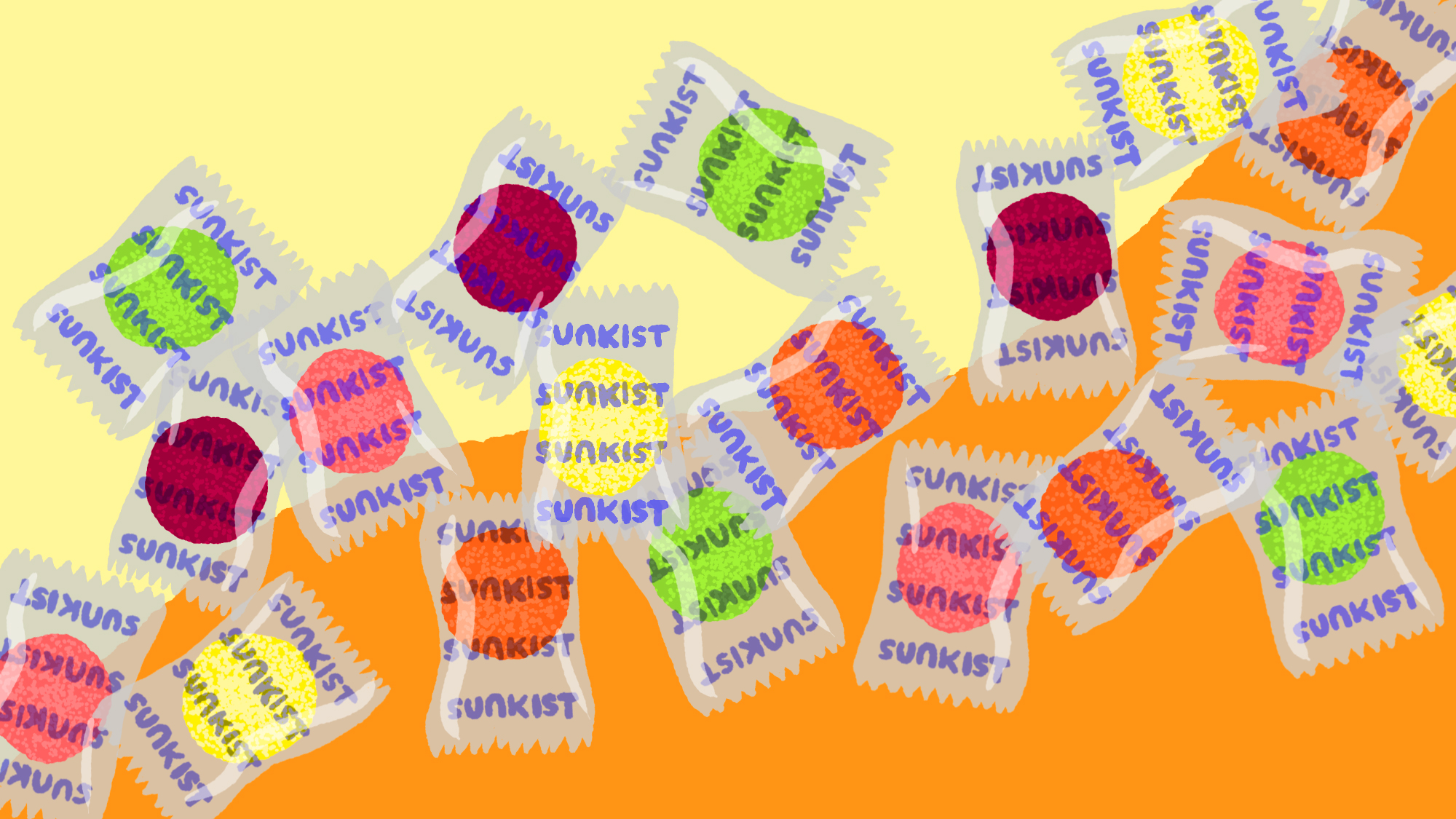If You Never Had Sunkist Fruit Gems Thrown At Your Face, Did You Even Have A Bar Mitzvah?
There comes a moment in every Jewish child's life—or at least the children whose parents have decreed they will become bar or bat mitzvahed—where they must stand in front of their community, read from an ancient text in a foreign language, and refrain from ducking as that same community is encouraged to absolutely nail them with airborne treats.
Jews have a reputation for forcing unwanted food on unsuspecting people, so perhaps it's inevitable that a number of moments in Jewish culture are punctuated by assaults upon the celebrants with edible projectiles. Within the context of a bar or bat mitzvah, throwing candy is intended as a metaphorical way to help "sweeten" the transition to adulthood, but after listening to an under-prepared teenager sweat through their haftarah reading, the execution tends to lean a little more retaliatory.
My suburban Connecticut synagogue preferred to arm its congregation with Sunkist Fruit Gems. These colorful jelly discs, available in various fruit flavors and encrusted with sugar, are a less flavorfully nuanced, more mass-produced derivative of pâte de fruit, a traditional French treat. Once deemed "boring," pâte de fruit is currently making a comeback, thanks to its Instagram-worthy aesthetic and success as a vehicle with which to infuse hipper substances, like CBD and Mezcal.
Fruit Gems remained a constant at the countless bar and bat mitzvah ceremonies I attended across the greater New England and tri-state area. The strength of their appeal wasn't their taste, which I still love to this day but understand to be divisive. Nor was it their lack of dietary red flags: gluten-free, gelatin-free, peanut-free, fat-free, dairy-free, and certified Kosher, Fruit Gems are the allergen gold standard of bar mitzvah throwing options.
No, Fruit Gems' chief selling point is their texture—soft enough to trust a sanctuary packed with bored, pubescent teens (and, let's be honest, their parents) to chuck at a vulnerable middle school student without committing lasting physical harm or derailing the Musaf service.
Sunkist Fruit Gems might never have found their way inside a synagogue had it not been for confectioner Ben Myerson. In the 1930s, Myerson worked in Los Angeles' candy scene, where he partnered with Sunkist Growers in experimenting with pectin, a carbohydrate-based gelling agent made from plant cell walls. First discovered by a French chemist a century earlier, pectin's primary use was to thicken jellies and marmalades, but new extraction factories were popping up across the country, and Myerson suspected a natural, animal-free gel might have useful applications in confectionary making.
By 1937, Myerson founded the Ben Myerson Candy Company; eighteen years later, he bought the Christopher Candy Company, the oldest sweet shop in Southern California. As part of the deal, Myerson Candy acquired two of Christopher's signature offerings: Christopher's Big Cherry and Christopher's Fruit Gems. In 1966, Myerson signed a licensing agreement with Sunkist Growers, legally updating the product's name to Sunkist Fruit Gems and forever ensuring its place in Jewish coming-of-age infamy.
Fruit Gems were such a reliably consistent presence for me during those bar and bat mitzvah years that it wasn't until I started asking people about them for this story that I realized my experience wasn't quite as universal as I initially thought. Jewish friends I reached out to said they remembered throwing Tootsie Rolls, Airheads, Jolly Ranchers, and Strawberry Buds, those hard candies packaged to resemble real strawberries and flavored to taste like real shit.
Hershey's Kisses were also a popular throwing choice, although anecdotally speaking, these are a risky bet. A Kveller contributor detailed her synagogue's blanket ban on the foil-wrapped missiles after the rabbi watched a fastball break a bride's finger during the aufruf, a pre-wedding ceremony. A friend who grew up in Los Angeles said her synagogue never threw anything at all, and my brother-in-law who was raised in New York reported that his congregation considered the whole tradition "a liability" that required too much cleanup.
The family-run candy business isn't the same as it was when Ben Myerson first founded his company. In 1946, there were 25 family-owned commercial candy companies operating in Los Angeles. By the time Myerson's son Robert was ready to retire after 65 years in the business, there was only one left.
In 2006, Robert Myerson sold his family's manufacturing and trade name assets to Jelly Belly. Production on the Fruit Gems moved to the company's plants in Illinois and California, and Jelly Belly updated the candy's flavor profile, swapping out cherry in favor of blueberry.
I have yet to see Fruit Gems stocked in stores, but they're readily available for purchase online. A two-pound bag will run you about $30 including shipping, which, as it turns out, is exactly how much I was willing to pay during a recent late-night nostalgia craving. Portion sizes are recommended at three pieces per serving, and I am delighted to report the candy tastes just as good as I remember, even without the dusty heel prints from the stampede of children who rushed the altar to collect them after the initial throw.
There's no way to grow up without enduring some amount of physical or emotional trauma, or at least that's what I've taken away from watching John Hughes movies. But if I had to suffer through any coming-of-age ritual, I suppose there are worse things than having Sunkist Fruit Gems launched at your face.
